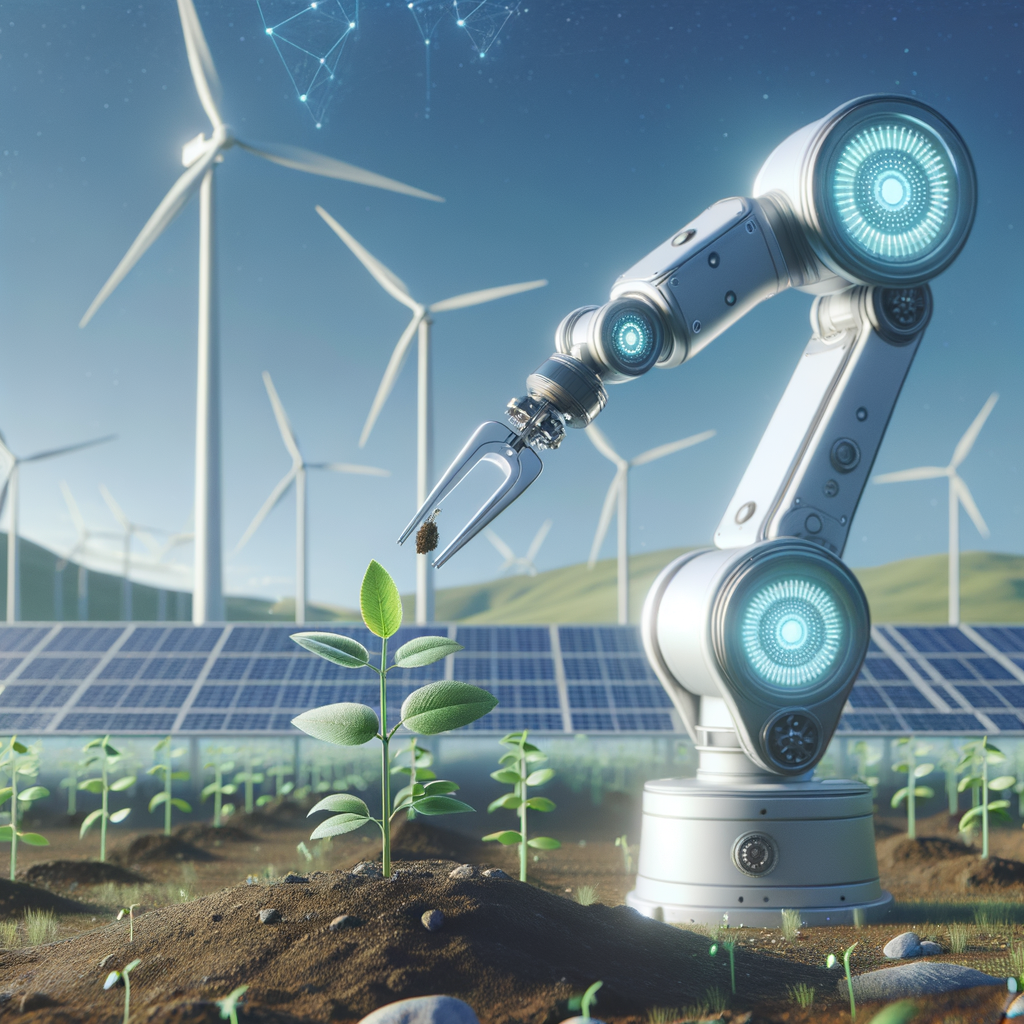
Breaking New Ground: The Intersection of AI Agents and Environmental Sustainability
Discover how AI is at the forefront of promoting environmental sustainability through innovative applications. This blog explores the evolution of AI agents and how they are being harnessed to tackle some of the most pressing ecological challenges. From optimizing resource use in smart grids to monitoring biodiversity, learn about the transformative role AI plays in preserving our planet for future generations.
Breaking New Ground: The Intersection of AI Agents and Environmental Sustainability
Introduction
Artificial Intelligence (AI) has emerged as a pivotal technology in driving advancements across various sectors, including healthcare, finance, and manufacturing. However, one of the most critical areas where AI is making a significant impact is environmental sustainability. As global awareness of climate change and environmental degradation intensifies, the need for innovative solutions to these pressing issues has never been greater. AI agents, with their ability to process vast amounts of data, offer promising opportunities for developing eco-friendly applications that enhance conservation efforts and sustainable practices.
In this blog, we'll explore the role of AI in promoting environmental sustainability. We'll look at how AI agents are currently being used to monitor environmental changes, optimize resource use, and aid in the conservation of ecosystems. We'll also discuss challenges and future directions for AI-powered sustainability initiatives.
AI in Environmental Monitoring
One of the primary applications of AI in the context of environmental sustainability is in monitoring changes within ecosystems. Remote sensing technology, powered by AI, can analyze satellite imagery to detect deforestation patterns, monitor the melting of ice caps, and track natural disasters such as hurricanes and floods. Machine learning models are employed to predict these events, allowing policymakers and scientists to respond quicker and more effectively.
AI-driven sensors collect real-time data on air and water quality, providing insight into pollution levels and enabling the implementation of mitigation strategies. These intelligent systems can alert authorities about potential environmental hazards, allowing for timely interventions.
Optimizing Resource Efficiency
AI agents are at the forefront of revolutionizing how we use resources, particularly in energy management. Smart grids, powered by AI, optimize energy distribution by predicting demand patterns and adjusting supply accordingly. This leads to reduced wastage and enhanced efficiency.
In agriculture, AI tools help optimize water use by predicting crop requirements and adjusting irrigation systems dynamically. These predictive capabilities significantly alleviate pressure on freshwater resources and help farmers maintain sustainable practices.
Conservation and Biodiversity
Biodiversity is essential for maintaining a healthy ecosystem, and AI is playing a crucial role in conservation efforts. AI-powered drones and cameras are used to track and count wildlife populations, providing valuable data for conservation strategies. Machine learning algorithms analyze these data sets to identify poaching risks, contributing to the preservation of endangered species.
AI tools also help in habitat mapping, identifying areas that require protection and restoration. By analyzing climate and ecological data, AI models can predict future changes and assist in planning for adaptable conservation efforts.
Challenges and Ethical Considerations
While AI presents remarkable opportunities for enhancing sustainability, there are challenges to consider. One key issue is the availability and quality of data, which are critical for building effective AI models. Ensuring data accuracy and addressing potential biases are ongoing challenges that need attention.
Additionally, there are ethical considerations around the deployment of AI technologies, especially in regions with limited technological infrastructure. Equity in access to AI tools and maintaining transparency in AI decision-making are essential factors for successful implementations.
The Future of AI in Environmental Sustainability
The future of AI in environmental sustainability looks promising, with numerous innovative applications on the horizon. Advances in AI technologies, such as reinforcement learning and neural networks, continue to enhance the sophistication and effectiveness of AI agents.
Collaborative initiatives between governments, research institutions, and the private sector are essential for leveraging AI's full potential in combating environmental challenges. By fostering an inclusive and multidisciplinary approach, AI can become an integral part of the global strategy for a sustainable future.
Conclusion
As we confront the escalating environmental challenges of our time, AI offers a beacon of hope. Its ability to provide data-driven insights and optimize processes is instrumental in ushering an era of sustainable development. By integrating AI with environmental strategies, we can pave the way for a healthier, more resilient planet.
Explore these innovative intersections and prepare to champion AI as a key player in achieving a sustainable future.